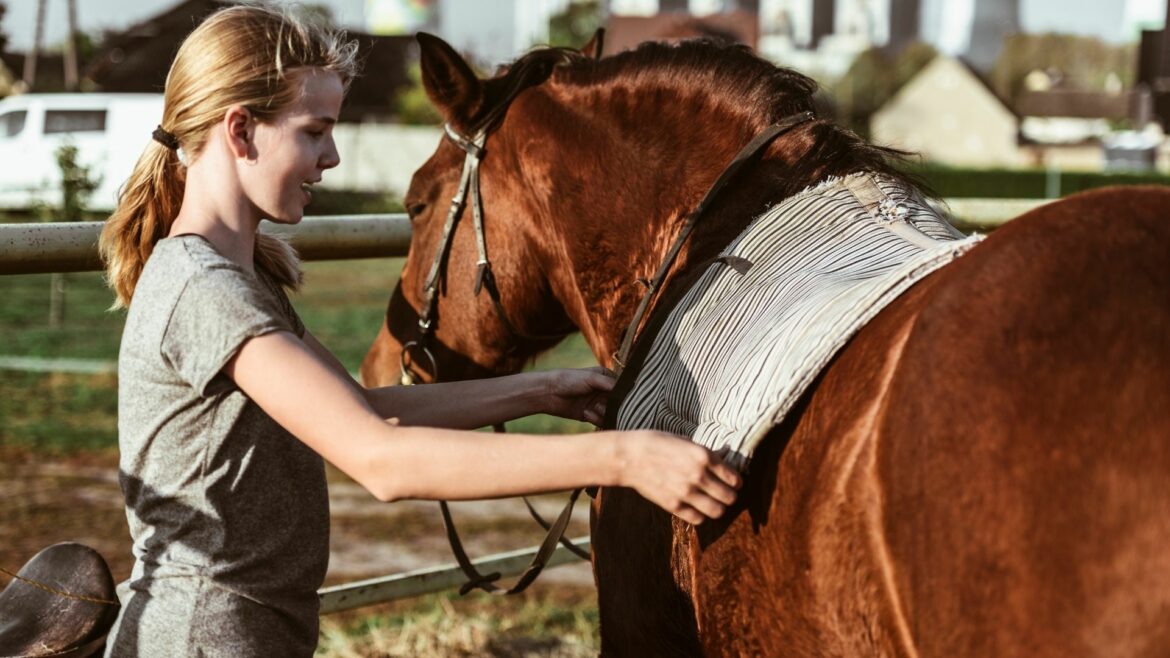
What Does Wet Saddle Pads Mean for Your Horse's Health?
Share
As a health-conscious pet owner, understanding your horse's gear is crucial. One common concern that arises is what does wet saddle pads mean? This term often refers to the condition of saddle pads after a ride, which can provide insights into your horse's health and the effectiveness of your tack.
In this article, we will dive deep into the significance of wet saddle pads, what causes the moisture, and how to interpret its implications for your horse's comfort and well-being. We will also cover best practices for saddle pad care and maintenance.

The Basics of Saddle Pads
Saddle pads play a vital role in equestrian equipment. They provide cushioning between your horse and the saddle, absorb shocks, and distribute weight evenly. Understanding the function of saddle pads is essential for any responsible horse owner. When a saddle pad becomes wet, it can indicate a few different things about the riding session and the condition of your horse.
Why Do Saddle Pads Get Wet?
There are various reasons why saddle pads end up wet after a ride. Common causes include:
- Horse Sweat: During rigorous exercise, horses can sweat profusely. When this sweat accumulates, it soaks into the saddle pad.
- Environmental Moisture: Riding in humid weather or after a rain can contribute to the saturation of saddle pads.
- Improper Fit: If the saddle does not fit correctly, it may cause the horse to sweat more than usual, leading to wetter pads.
Interpreting the Moisture Levels
Understanding the moisture levels in your saddle pad is vital. If you frequently find your saddle pad excessively wet, it may suggest:
- A serious level of sweating that may need to be addressed through equipment changes or fitness considerations.
- Potential discomfort for your horse, as excess moisture can irritate their skin.

Health Implications of Wet Saddle Pads
Regularly observing wet saddle pads can reveal much about your horse's condition:
- Skin Health: Prolonged exposure to wetness can lead to skin irritations or infections, so it is vital to keep your horse dry under the saddle.
- Fitness Level: If your horse is sweating more than expected, it could indicate changes in their fitness or health.
Keeping Your Saddle Pads Clean
If you notice excess moisture in your saddle pads, monitoring their cleanliness is crucial. Dirty saddle pads can retain more sweat and bacteria, worsening any moisture issues. Here are some tips on cleaning saddle pads effectively:
- Wash them regularly according to the material's specific instructions.
- Avoid harsh chemicals, as these can irritate your horse's skin.

How to Deal with Wet Saddle Pads
Dealing with wet saddle pads is more than just an inconvenience; it involves ensuring your horse's comfort and health:
- Drying Techniques: After use, allow your saddle pads to air dry thoroughly.
- Alternate Pads: Consider having multiple saddle pads on hand so you can switch them out during intense workouts.
When to Seek Help
If you frequently encounter excessively wet saddle pads, it might be time to consult a professional. Adjustments to your horse's tack or a check on their health status might be necessary. Learn more about saddle fit to ensure optimal performance.
Conclusion
In conclusion, understanding what does wet saddle pads mean is crucial for maintaining your horse's health. Keeping an eye on moisture levels can prevent skin issues and improve your relationship with your horse during rides. Always remember to keep your tack clean and well-fitted for the best outcomes.
FAQs
- 1. How can I tell if my saddle pad is too wet? You can assess its dampness by feeling its surface and checking for moisture retention.
- 2. Is it normal for saddle pads to get wet? A degree of dampness can be normal, particularly after vigorous riding, but excessive moisture should be monitored.
- 3. What should I do if my saddle pad retains moisture? Allow it to air dry thoroughly and consider using more than one pad during riding sessions.
As an Amazon Associate, I earn from qualifying purchases.
